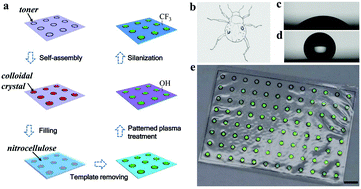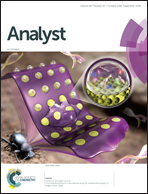A bio-inspired photonic nitrocellulose array for ultrasensitive assays of single nucleic acids
Abstract
Here we report a bio-inspired photonic nitrocellulose array for ultrasensitive nucleic-acid detection. The patterned photonic nitrocellulose array is inspired by the Stenocara beetle living in the desert, which can collect water on its bumpy back surface from early morning fogs so that spontaneous generation of separated reaction droplets for loop-mediated isothermal amplification (LAMP)-based detection is enabled. Owing to the slow-photon effect of the photonic nitrocellulose, the fluorescence signal of calcein produced during the LAMP reaction can be effectively enhanced (up to 32 fold), which results in dramatically improved sensitivity for the detection of single nucleic acids in 40 min. We demonstrate that Staphylococcus aureus (SA) DNA can be quantitatively detected with a limit-of-detection of 0.60 copy per μL. The consumption of reagents and sample is also remarkably reduced owing to the highly decreased dead volume of the nitrocellulose substrate. Therefore, this bio-inspired photonic nitrocellulose array is promising for carrying out inexpensive, ultrasensitive, and high-throughput nucleic-acid detection under resource-limited settings.



 Please wait while we load your content...
Please wait while we load your content...